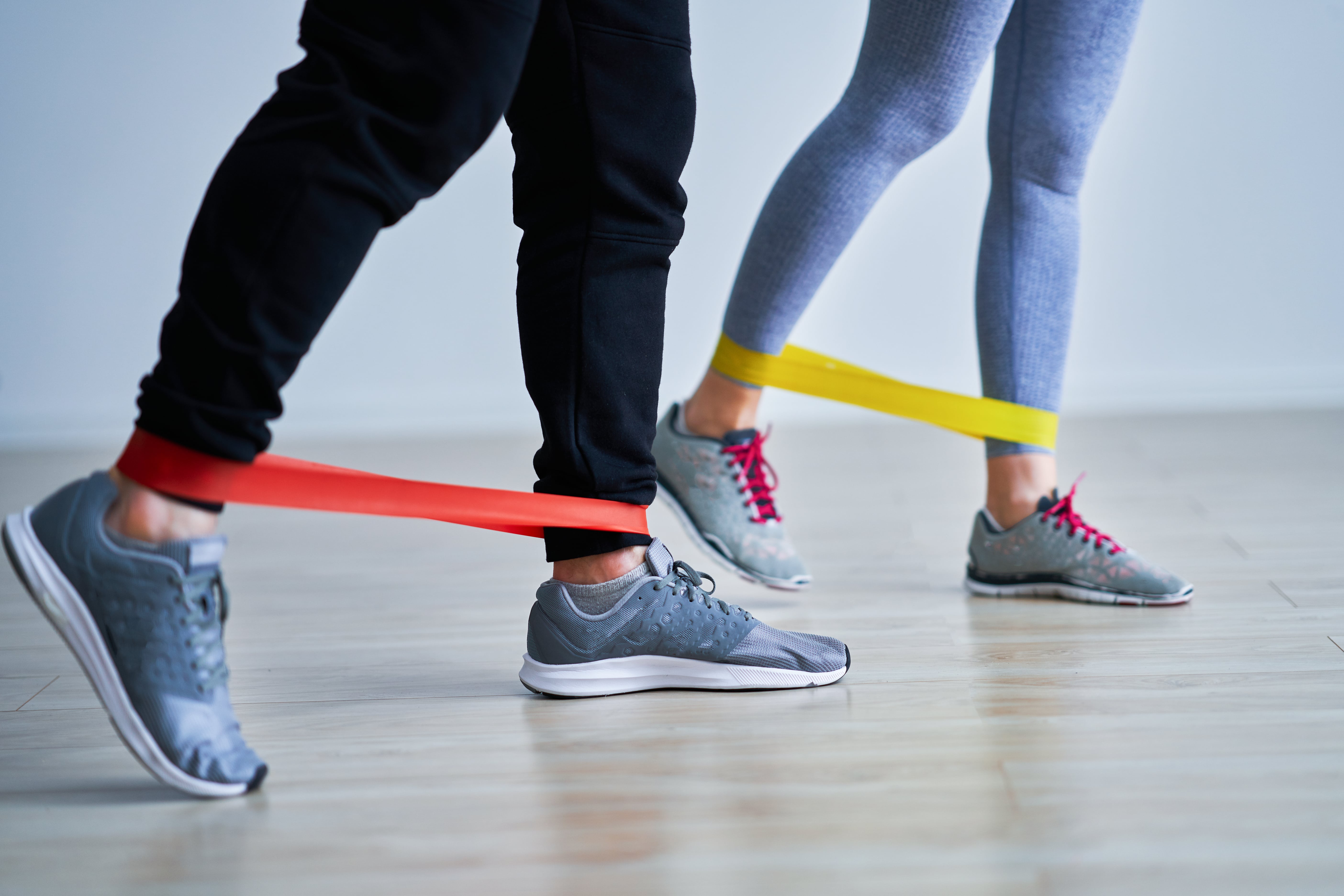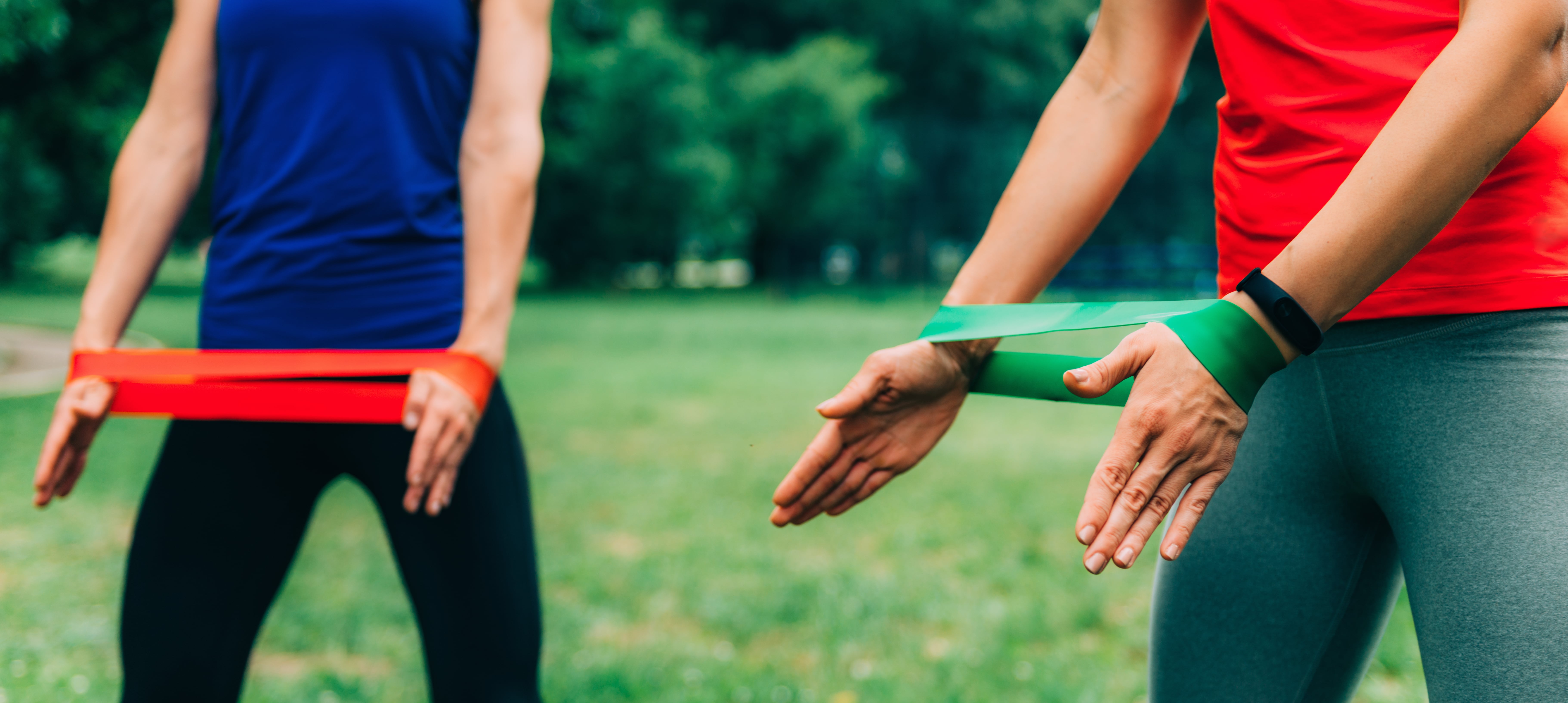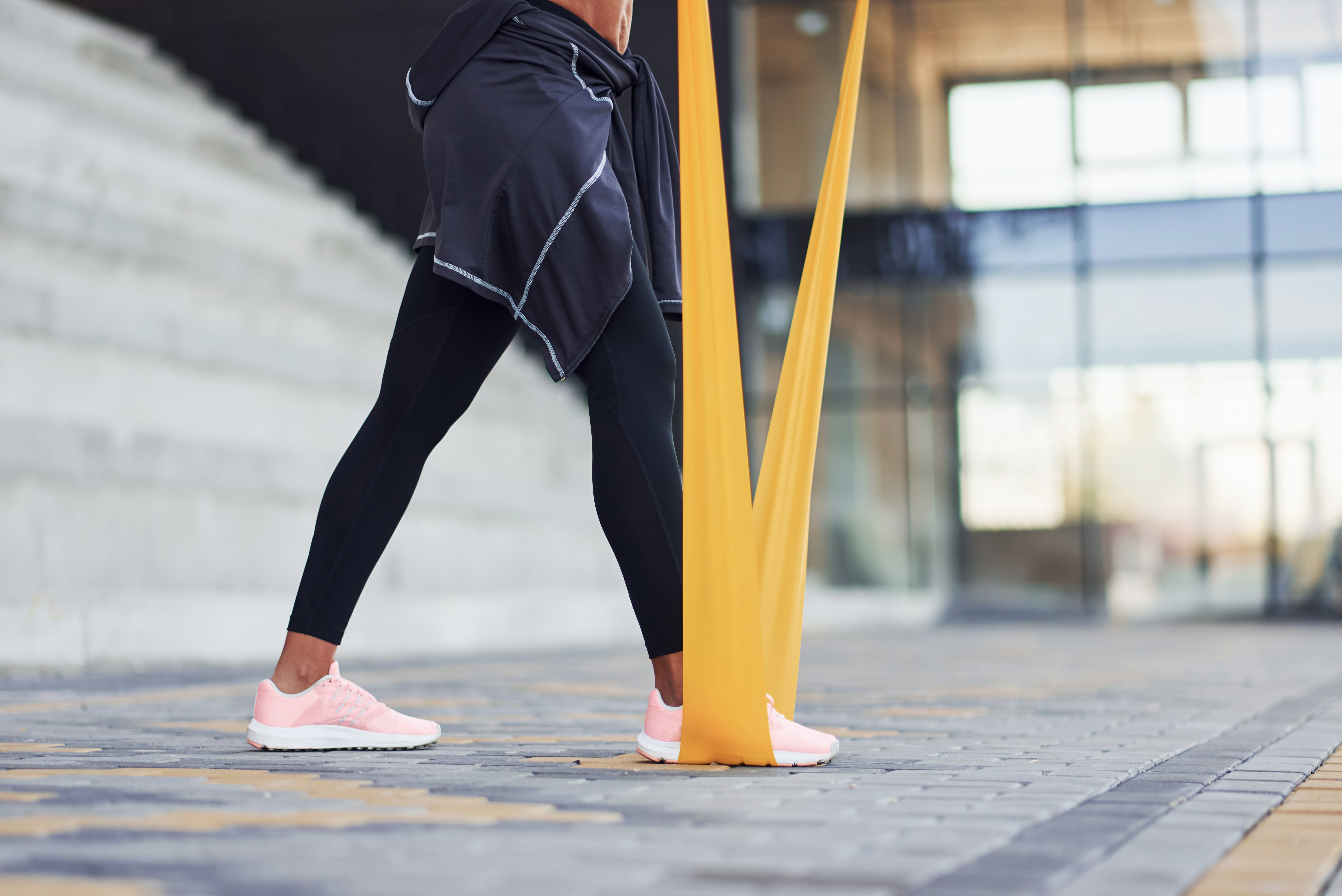Key Takeaways
- Resistance band workouts offer a highly accessible way to build muscle and stabilize blood glucose simultaneously by driving glucose absorption into muscle cells, often as effectively as using traditional gym equipment.
- The powerful muscle contractions triggered by resistance band exercises activate GLUT4 transporters, which significantly improve insulin sensitivity and allow your body to clear sugar from the bloodstream more efficiently.
- Tools like a CGM allow you to personalize your routine by interpreting real-time glucose data and fine-tuning the intensity, timing, and nutritional pairing of your band workouts for optimal strength building and glycemic control.
{{mid-cta}}
Are you looking to build muscle strength and improve your fitness level, but don’t have a gym membership or multiple sets of free weights or kettlebells at home? Well, it may sound like a stretch, but research shows you can gain strength, break through plateaus, and target glucose stability all by using resistance bands at home, an easy way to do a low-impact, full-body workout that can strengthen your upper body, lower body, and core.1 Resistance bands are a surprisingly powerful and versatile tool offering a challenging alternative to traditional gym-based workouts.
Learn how a resistance band workout can effectively mimic (or enhance) the load provided by dumbbells or bodyweight exercises, leading to significant gains in muscle mass and strength.2 This article will also dive into the physiological mechanisms by which resistance exercise using bands can improve insulin sensitivity and blood sugar levels, making it a highly effective and accessible tool for anyone striving for better metabolic health and fitness without setting foot in a gym.3
Why Resistance Bands Work for Glucose Regulation

Building muscle mass helps improve glucose control by enhancing the ability to utilize sugar and properly store it in larger quantities within muscle cells. How do we build muscle mass? One way is through resistance-based strength training, including resistance band exercises like bicep curls, triceps extensions, chest press, and overhead press. In fact, these exercises activate multiple muscle groups (from your glutes and quads to your upper arms and upper back), helping your body build strength and lower back stability over time.4
When using resistance bands, your muscles resist tension for a longer period than they would when using dumbbells, because the load (or “weight”) increases as the band is stretched.5 To accommodate this prolonged time under tension, the muscles quickly begin to absorb glucose from your bloodstream, lowering your overall blood sugar levels both during and after your workout.
As you build muscle mass, you’ll find your blood sugar levels become more controlled, more predictable than ever before. So grab a resistance band or two and watch your metabolic health snap into shape.
Exercise & Blood Sugar: How Strength Training Helps

Strength training, whether using loop bands, mini bands, or free weights, is highly effective in controlling blood sugar and improving overall fitness level. To achieve this level of health, we require increased glucose uptake by muscle cells, combined with more storage space for glucose. This is where muscle cells shine.
Active contractions during strength workouts create an immediate demand for energy, which directly increases the uptake of glucose from the bloodstream. This process activates glucose transporter type 4 (GLUT4), creating more pathways for glucose to enter without the need for insulin.6 Each repetition (rep) challenges your muscle groups differently depending on resistance levels, whether you’re working your hamstrings, shoulder blades, or upper back.
Give it a few months of devoted strength training, and you’ll find your new muscle mass has become an efficient metabolic powerhouse. Hello, long-term blood sugar control.
The Signos Approach: Crafting Smart Resistance-Band Sessions

A glucose monitor can help provide immediate, personalized feedback while incorporating home workouts or total body resistance band training into your weekly workout routine. Gain personalized suggestions for optimal resistance training workouts and actionable insights into how to leverage resistance bands for optimal strength building and glucose stabilization.
Here are the different tools Signos uses to enhance your resistance band workouts and metabolic health:
- Glucose Insight Loop: Compare your pre- and post-workout session glucose curves to understand how workout intensity and duration can maximize glucose stabilization.
- Sequencing Strategy: Signos determines the best order for your exercises; for example, using resistance bands prior to cardio to prevent excessive post-exercise glucose dips.
- Time-of-Day Tuning: Explore whether afternoon resistance sessions yield steadier, more favorable glucose responses compared to fasted morning workouts, allowing you to schedule your training for optimal metabolic benefit.
- Recovery Nutrition Sync: Utilize your post-workout glucose trends to precisely time the intake of carbohydrates or protein, ensuring that your nutrition supports blood sugar stabilization and facilitates muscle recovery.
These insights help you tailor your resistance band workouts, from a beginner-friendly arm workout to more advanced lat pulldown or pull-apart moves, so you can progressively build muscle and improve glucose stability.
Indoor Resistance-Band Workout Blueprint

Try this beginner-friendly home workout that builds strength, tones your upper body and lower body, and supports metabolic stability. Start with just 2–3 sets of 10 repetitions (reps), giving yourself about 60 seconds of rest between sets and exercises.
- Squats: Keep your feet hip-width apart in the starting position, engaging your glutes, quads, and hamstrings. Stand on the band, holding the ends at your shoulders. Push your hips back and lower down as if sitting in a chair, then stand up using your glutes and quads.
- Chest Press: Either standing or lying on your back, wrap the band around your back and hold the ends. Starting with your hands at your chest, push your arms straight forward as you elongate the band. This move targets your upper arms and chest, making it a great alternative to pushups for those who prefer a low-impact option.
- Deadlifts: Stand on the band with feet shoulder-width apart, holding the ends at your waist. Keeping a flat back, hinge at the hips to lower the torso, then stand back up, squeezing the glutes as you bring your hips forward. Maintain a neutral spine to protect your lower back, and focus on squeezing your glutes at the top of the movement.
- Overhead Press: Stand on the center of the band with one end of the band in each hand. Start with your hands at your shoulders, then press your arms up to shoulder height, and finally fully extend them overhead. You can also do single-arm overhead presses and alternate between the right arm and left arm for balanced upper body development.
- Rows: Sit with legs extended, looping the band around your feet. Pull the band handles toward your ribcage. Squeeze your shoulder blades together as you pull the band back, keeping your core tight.
- Bicep Curls: Stand with your feet shoulder-width apart. Stand on the band, hold the end of the band in each hand, palms up, and curl until your hands reach shoulder height. Keep your elbows close to your sides.
Stretching the Concept: Advanced Resistance Band Workflows

Once you’ve built confidence, try kickbacks, triceps extensions, or a lunge combined with a pull-apart or overhead press for a total body challenge. Vary your types of resistance bands and resistance levels to continue progressing your strength training and prevent back pain from improper form.
- Thrusters: Start by standing on the band and holding the handles at your shoulders. Perform a full squat, and as you explosively stand up, use that momentum to immediately drive the handles overhead into an overhead press.
- Rotational Lifts: Anchor the band low and to one side (i.e., around a stable pole, banister, or in the crack of the door). Grip the end of the band with both hands, and pull the band diagonally across and up using your abdominal muscles as you rotate your torso away from the anchor point.
- Band-Resisted Push-Ups: Place the band across your upper back and loop the ends around your hands (placed flat on the floor). Perform a standard push-up either from your toes or your knees. The band provides extra resistance at the top of the movement, thereby increasing core muscle engagement.
Sample Weekly Workout Plan

Your CGM can help create an optimal workout routine that alternates upper body and lower body sessions. Try mixing Pilates, bodyweight, or resistance band workouts using a set of bands at different resistance levels to build balanced muscle groups.
Check out this example of a workout program that targets muscle building and enhancing blood sugar control:
- Monday: Resistance band full body workout for 30-45 minutes, focusing on all major muscle groups.
- Tuesday: 45-60 minutes Zone 2-3 cardio such as brisk walking, cycling, swimming, or a light jog.
- Wednesday: Full body resistance band workout for 30-45 minutes, incorporating different exercises than Monday’s workout.
- Thursday: Active recovery day focusing on mobility, light core exercises, or a lovely walk outdoors.
- Friday: HIIT-style cardio workout for 30-40 minutes.
- Saturday: 30-45 minute resistance band workout incorporating a few of the more complex, compound movements.
- Sunday: 45-60 minutes of moderate intensity cardio followed by mobility or gentle stretching to aid recovery.
The Bottom Line
Whether you’re doing resistance band exercises at home or combining them with dumbbells, loop bands, or kettlebells, consistent training helps you build strength, improve muscle tone, and stabilize blood sugar levels.
Remember: the right starting position, proper repetitions, and balanced engagement of both upper and lower body all help you get the most out of your resistance band workout.
Learn More About Signos’ Expert Advice
If you have more questions on improving your health, fitness, and nutrition, seek the expert advice of the Signos continuous glucose monitor and the Signos team. A glucose monitor (CGM) can give you the insights to make smarter nutrition and exercise choices. The Signos app offers a personalized program to help you
Topics discussed in this article:
References
- Park, B. S., Khamoui, A. V., Brown, L. E., Kim, D. Y., Han, K. A., Min, K. W., & An, G. H. (2016). Effects of elastic band resistance training on glucose control, body composition, and physical function in women with short-vs. long-duration type-2 diabetes. The Journal of Strength & Conditioning Research, 30(6), 1688-1699.
- Bergquist, R., Iversen, V. M., Mork, P. J., & Fimland, M. S. (2018). Muscle activity in upper-body single-joint resistance exercises with elastic resistance bands vs. free weights. Journal of human kinetics, 61, 5.
- Kaewmanee, S., Penglee, N., Polyai, N., Rutnosot, G., Sanpoksub, P., Guyot, B. S., ... & Thengchaisri, N. (2025). Resistance band exercise outperforms low-intensity exercise in reducing BMI, body fat, and blood glucose levels in patients with non-communicable diseases. Journal of Holistic Nursing Science, 12(1), 49-59.
- Colado, J. C., & Triplett, N. T. (2008). Effects of a short-term resistance program using elastic bands versus weight machines for sedentary middle-aged women. The Journal of Strength & Conditioning Research, 22(5), 1441-1448.
- Smoak, Y. (2022). Effects of Free-weight with and without Elastic Band Tension on Upper-Body Strength and Muscular Endurance: A Randomized Parallel Trial. Journal of Strength and Performance, 1(1).
- Holten, M. K., Zacho, M., Gaster, M., Juel, C., Wojtaszewski, J. F., & Dela, F. (2004). Strength training increases insulin-mediated glucose uptake, GLUT4 content, and insulin signaling in skeletal muscle in patients with type 2 diabetes. Diabetes, 53(2), 294-305.




.svg)










.svg)
.svg)
.svg)
.svg)
.svg)
.svg)
.svg)
